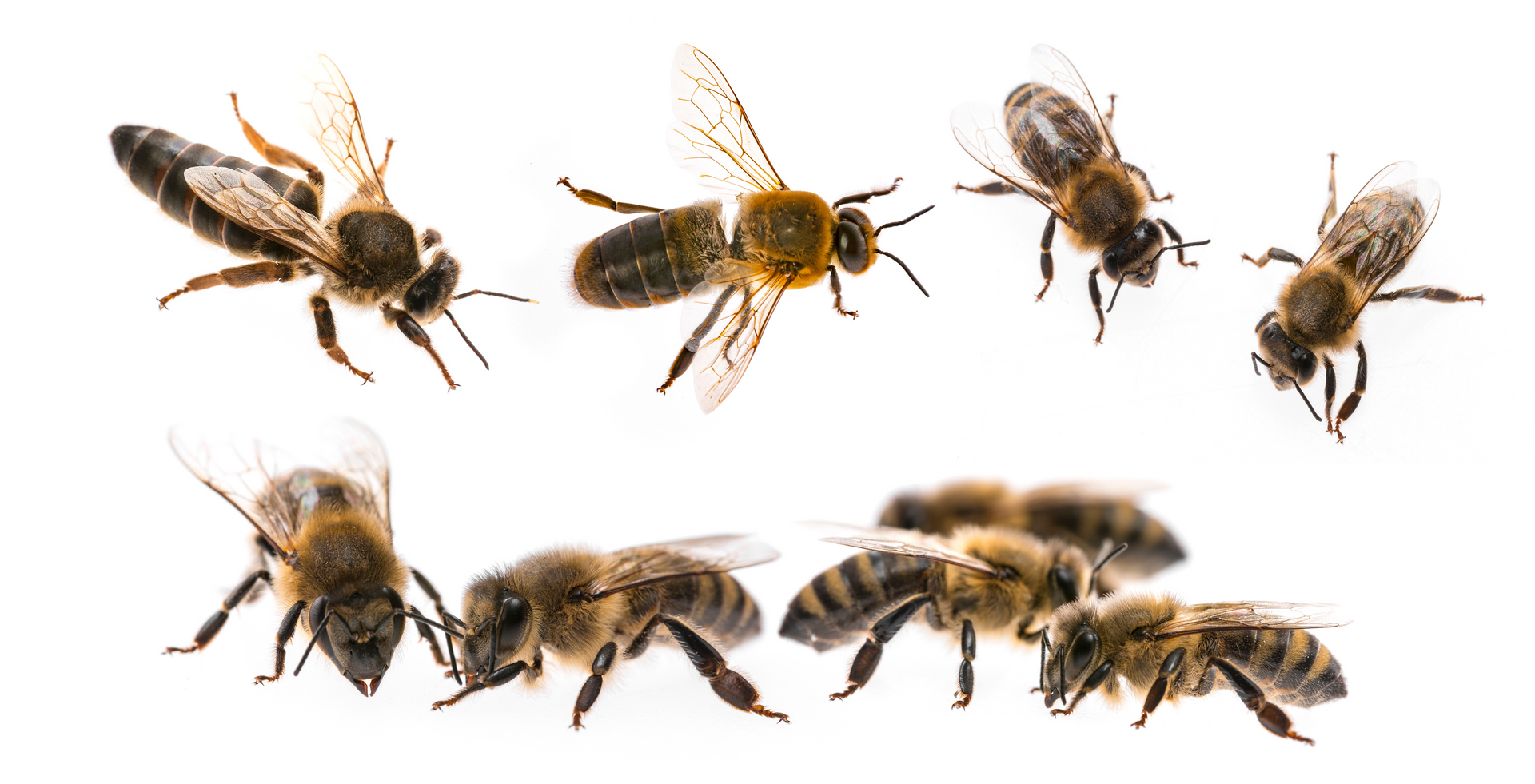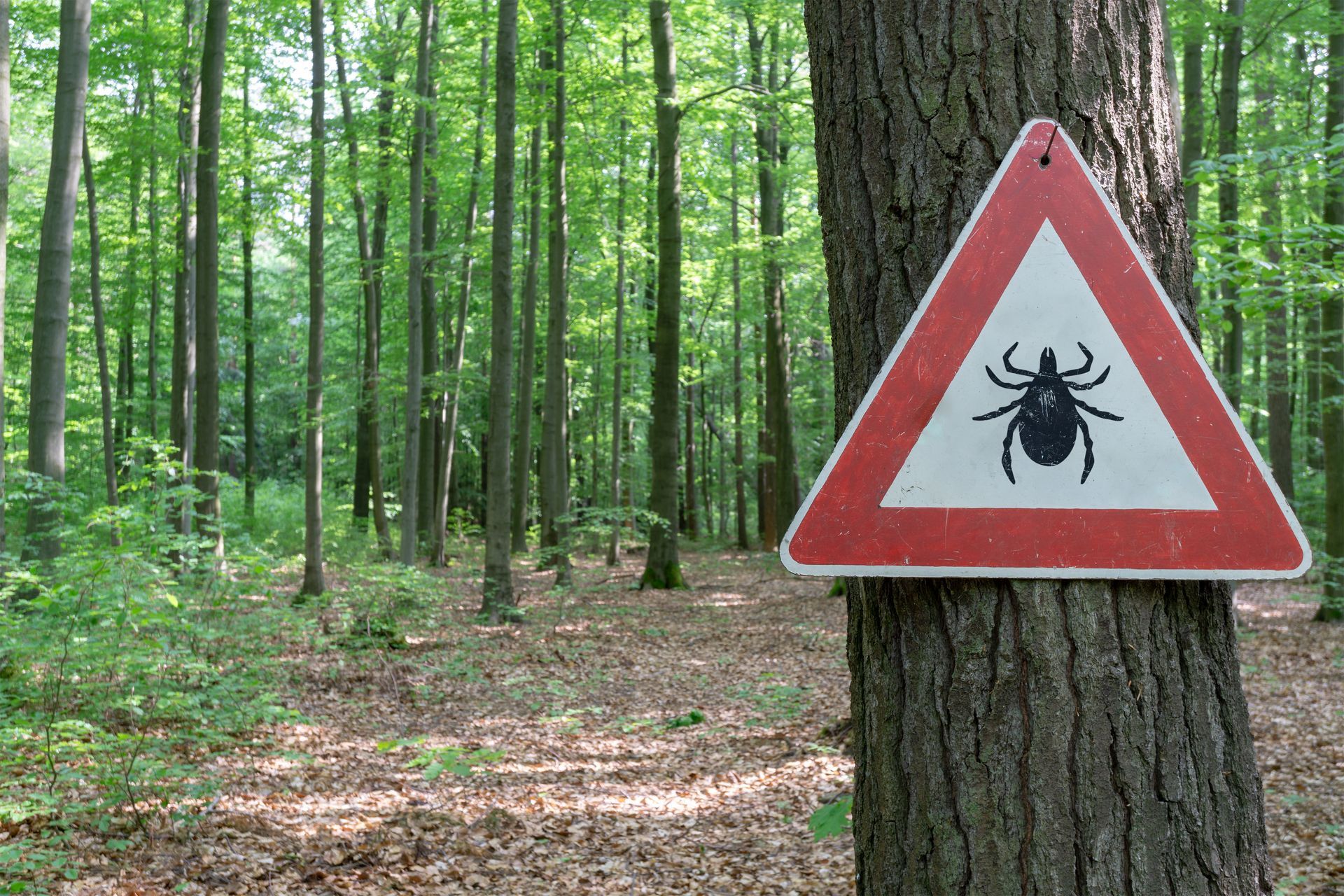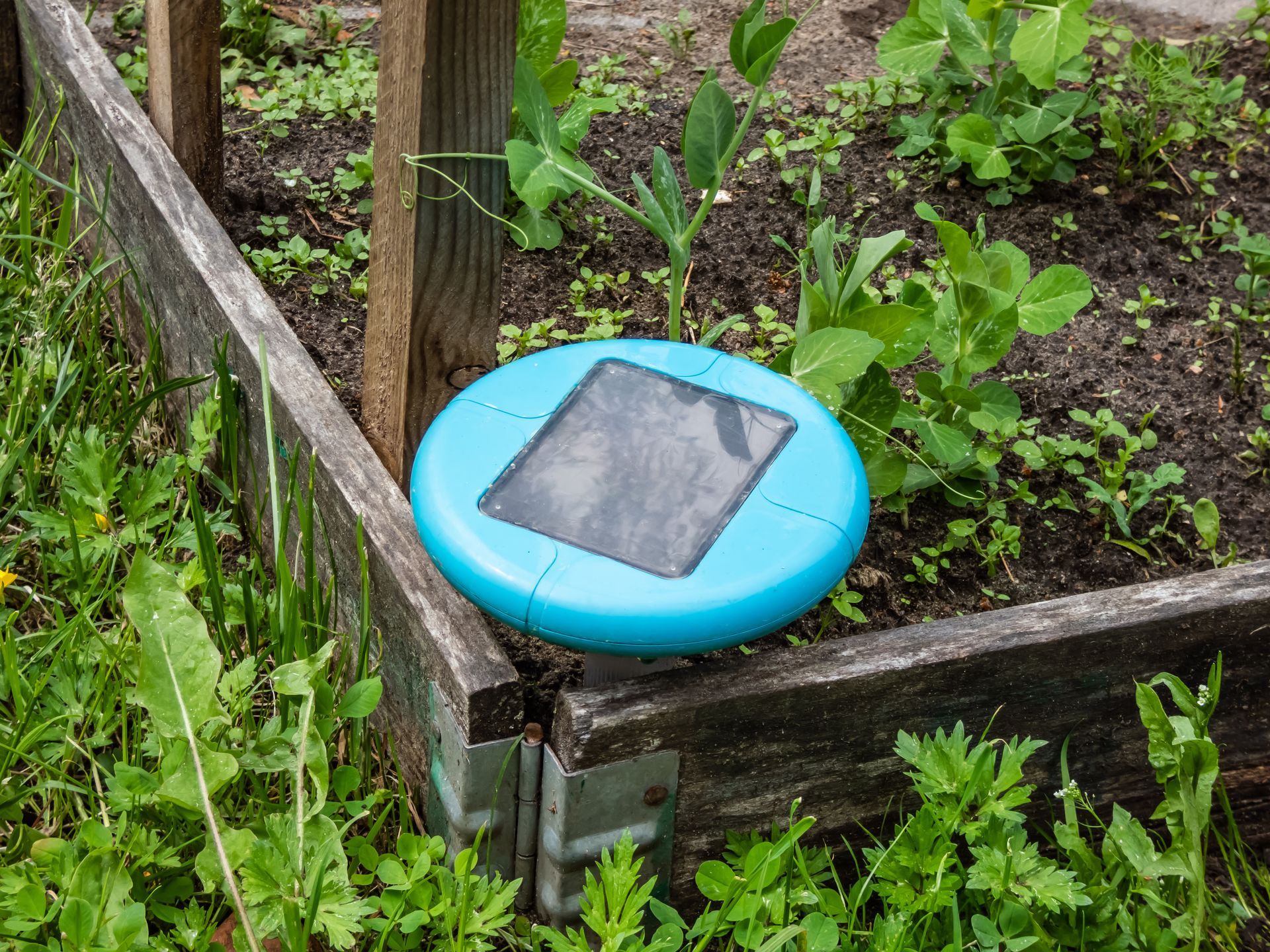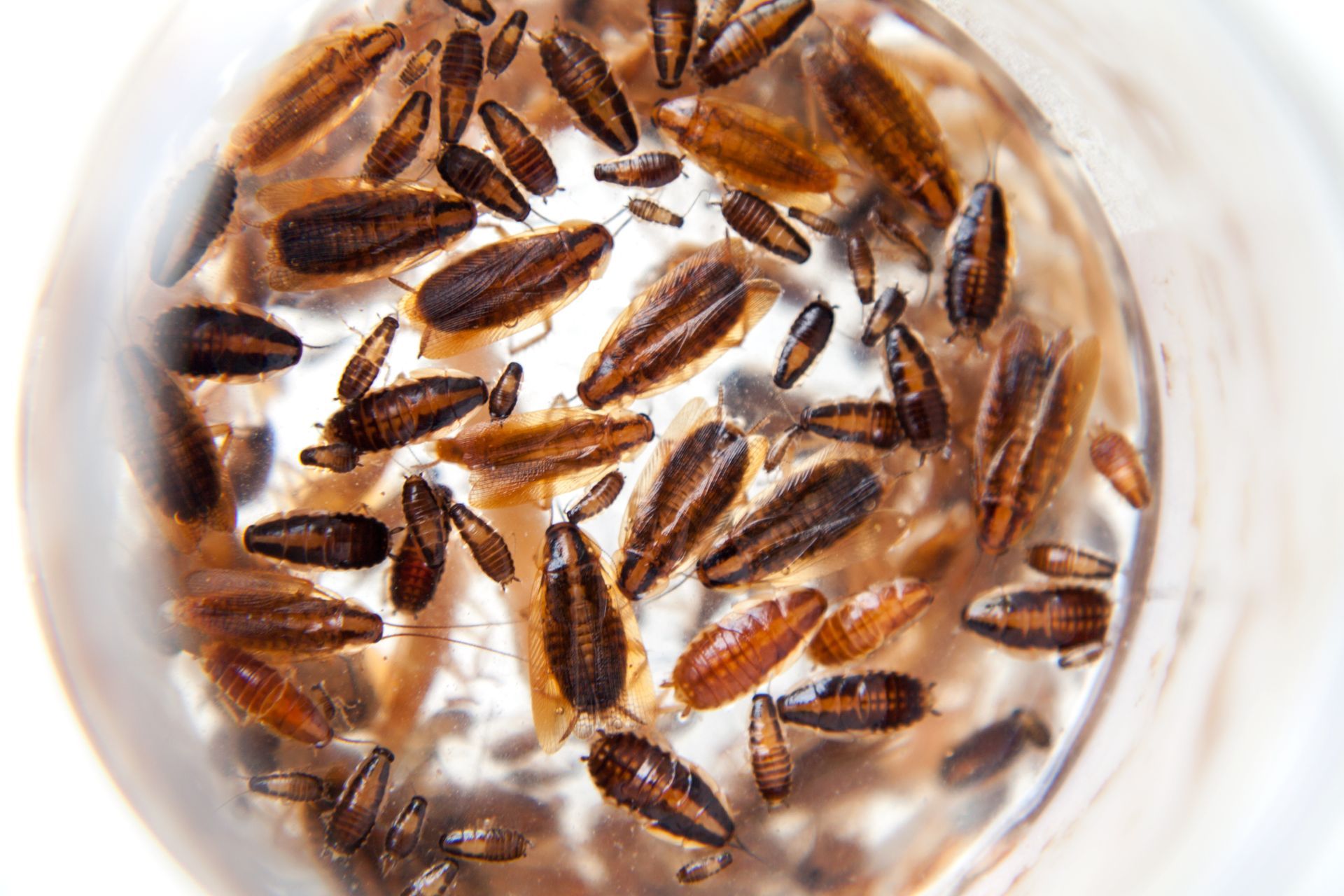What Do Bed Bug Eggs Look Like?
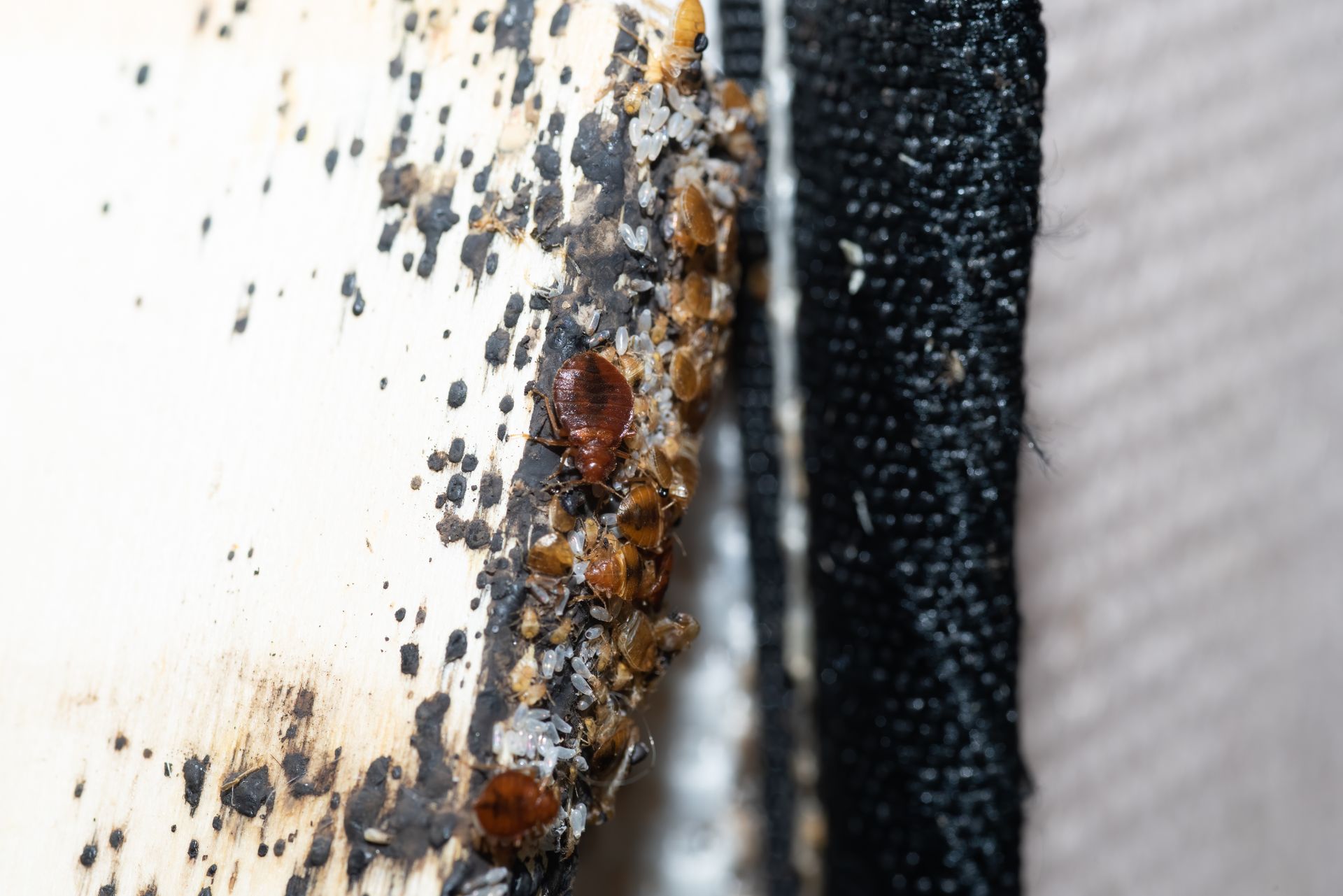
Finding bed bug eggs is the worst possible indicator of bed bug activity because it means that they are already feeding and proliferating. After female bed bugs feed, they can lay between 1 and 7 eggs per day for about 10 days. With regular access to a host to feed on, a female bed bug can lay hundreds of eggs in her lifetime. Bed bug eggs are even more problematic because they are resistant to chemical treatments which makes them extremely challenging to treat. This is why bed bug treatments often require multistage treatment plans to ensure the threat is completely exterminated.
Can You See Bed Bug Eggs?
Bed bug eggs are tiny but can still be seen without the use of a microscope. These eggs are approximately one millimeter long which is roughly the size of a pinhead. Their small size and the tendency of bed bugs to lay their eggs in concealed locations can make detection challenging. Bed bugs often choose hidden areas such as underneath the bed frame, inside the box spring, or behind the headboard to lay their eggs, making them less likely to be noticed.
Interestingly, female bed bugs often lay their eggs in clusters, which can make it somewhat easier to spot them. The grouping of these tiny eggs can enhance their visibility, aiding in early detection before they hatch. The hatching process typically occurs within a span of seven to ten days. Therefore, regular inspection of potential hiding spots can be crucial in identifying and managing a bed bug infestation early on.
How to Identify Bed Bug Eggs
Bed bug eggs can be challenging to identify, especially for those unfamiliar with what to look for. Bed bug eggs are small, oval shaped, and have a pearl-white color which makes them resemble a grain of salt or tiny grains of rice. This can make them difficult to spot, especially against lighter-colored fabrics such as mattresses and linens. Bed bug eggs are also covered in a sticky coating that allows them to adhere to almost any surface which means that they can be hidden just about anywhere bed bugs can hide. Eggs that are older than five days will have a dark mark that resembles an eye, providing another identification clue. This eye is a hinged cap that opens to allow the ready to hatch bed bug nymphs to escape the egg. Within ten days most eggs will hatch but the hatching time varies and is dependent on temperature, with cooler temperatures potentially extending the hatching period. These eggs can be found individually or in clusters in bed bug harborage areas, which can range from more obvious locations like mattresses, box springs, and bed frames to less obvious locations like recessed screw holes, door hinges, picture frames, or furniture upholstery. In some cases, a black light can be used to help locate bed bug eggs because they glow under this type of light.
How and Where Do Bed Bugs Lay Eggs?
Bed bugs are ectoparasites that rely on the blood of their hosts for survival and reproduction. In optimal conditions, one female bed bug can lay up to 20 eggs over the course of several days after consuming one blood meal. Over her lifetime, a female bed bug can lay hundreds of eggs which can cause an infestation to explode in a short period. These eggs are typically laid on or near beds which allow bed bugs to feed on human blood while the host sleeps. The eggs usually hatch within 7 to 10 days, and the newly hatched bed bugs take about 5 to 7 weeks to mature and start reproducing.
Once a host is found, bed bugs tend to stay close to their host to feed. Most eggs are laid in protected sites as close to their food source as possible, so the newly hatched nymphs can start feeding immediately. Bed bugs can fit into a crack as thin as a business card and still lay eggs. Common places to find their eggs include mattress seams and joints, box springs, sheets, pillows, wall cavities, picture frames, and behind headboards. Bed bugs reproduce through traumatic insemination, and only inseminated females can lay eggs.
Can Bed Bug Eggs Spread?
While bed bug eggs are sticky and do not spread easily on their own, they can be inadvertently transported from one location to another through various means. For instance, if an adult female bed bug latches onto your clothing, it could potentially lay eggs that you unknowingly carry into your home. This could occur in various settings, such as a theater, where a bed bug might crawl into your clothing and later lay eggs. Similarly, purchasing used furniture infested with bed bugs or staying in a hotel room with a bed bug infestation could result in eggs being laid on your belongings. These eggs could then be brought into your home, leading to a potential infestation. For this reason, it's crucial to be vigilant in situations where bed bugs might be present to prevent unintentionally spreading their eggs.
How Many Eggs Does a Bed Bug Lay?
The number of eggs a bed bug lays in her lifetime is contingent on her access to regular blood meals. A bed bug that is regularly feeding on blood will start laying approximately 1 to 7 eggs per day for a ten-day period following 2 -5 days of waiting for their body to produce eggs. This means that in the 2 weeks following a blood meal, one female bed bug can produce between 10 – 70 eggs in the most optimal conditions. However, on average, that amount is typically more likely to be between 20 -30 eggs. Once the female bed bug runs out of the nutrients she needs to keep producing eggs, she will need to feed again and undergo another traumatic insemination to produce more eggs.
These eggs typically hatch within 7 – 10 days and the newly hatched bed bugs, also known as nymphs, will take about 5 – 7 weeks to mature and start reproducing. Therefore, a single female bed bug can contribute significantly to the growth of a bed bug population, especially if she has regular access to blood meals.
How to Check for Bed Bug Eggs in Your Home
Checking for bed bug eggs in your home involves a thorough inspection of potential hiding spots. Bed bugs often enter homes through luggage and suitcases, and once inside, they typically head for the mattress due to their nocturnal feeding habits. They lay their eggs in safe, hidden areas close to a food source. Common locations for bed bug eggs include mattress seams and joints, box springs, and behind headboards. You may also find them behind wallpaper and picture frames, in cracks and crevices around the property, and even under carpets. To locate these tiny, translucent eggs, you may need a flashlight and a magnifying glass. Remove sheets and pillows and carefully inspect every seam and crevice.
In addition to visual inspection, there are other methods to detect bed bug eggs. You can hire a bed bug sniffing dog company to inspect your home, as a certified dog can alert to the presence of live bugs or eggs. Another method involves the use of a UV light, which can make the proteins in the eggs glow, although this requires special glasses to see. Look for fecal stains, which can help narrow down the search area. If you suspect a bed bug infestation, it's advisable to seek professional assistance, as finding bed bug eggs can be particularly challenging due to their small size and the insects' ability to hide in hard-to-reach places.
Will Bed Bugs Eggs in My Mattress Hatch?
Yes, bed bug eggs that are laid in your mattress will indeed hatch into immature bed bugs. Unlike insects that undergo a full metamorphosis, bed bugs experience a simpler three-stage life cycle: egg, nymph, and adult. Bed bug nymphs resemble their adult counterparts but are smaller and have a transparent or straw-like color. As they grow and mature, they undergo five molting stages that become darker and larger at each stage.
At the end of each nymph stage, they will shed their outer shell to allow for growth. These discarded exoskeletons are another clear sign of a bed bug infestation and can be found in the same areas where bed bugs and their eggs are typically located. The exoskeletons resemble actual bed bugs but composed of a translucent shell. Their size can vary significantly, depending on the stage of development of the bugs that shed them. Therefore, if you find these exoskeletons, it's a strong indication that bed bug eggs in your mattress have hatched and that an active infestation is present.
How Common Are Bed Bug Eggs in Clothing?
Bed bugs can indeed lay their eggs on fabrics, including clothing. While they typically deposit their eggs near where their host sleeps, they can also lay them in other areas like clothes piled up on a bed infested with adult female bed bugs. They can also hitchhike on an unsuspecting host and lay eggs on your clothing.
The sticky nature of bed bug eggs means they are unlikely to fall off your clothing, making it possible for you to inadvertently transport them to new locations. If an egg were to hatch while you're in a public place, such as on public transportation, the newly hatched nymph could feed on you and then find a hiding spot on the seat, potentially starting a new infestation. Therefore, it's crucial to be aware of the potential for bed bug eggs to be present on clothing, especially if you're in an environment where bed bugs are known to be present. Regular washing and drying of clothes on high heat can help kill any bed bug eggs that may have been laid on them.
How to Get Rid of Bed Bug Eggs
There are several methods to effectively get rid of bed bugs and their eggs in your home. Vacuuming can be partially effective, especially when used without an attachment to increase suction power. However, it's important to dispose of the vacuum contents outside the house in a sealed plastic bag to prevent further infestation. Heat treatment is another effective method, as bed bugs cannot tolerate temperatures higher than 120 degrees Fahrenheit. This can be done at home using a dryer for smaller items or a specialized bed bug heater for larger items. Professional heat treatment services are also available, which use specialized equipment to heat the entire space to a temperature lethal to all stages of bed bugs.
Chemical pesticides can also be used, but over-the-counter solutions may not be strong enough for severe infestations and could pose health risks. Professional pest control services are recommended for safe and effective chemical treatment. Other methods include CO2 fumigation, steam heat, and Vikane gas fumigation, which are all effective but typically require professional assistance.
Why is Heat Treatment So Effective Against Bed Bug Eggs?
Heat treatment is particularly effective against bed bug eggs because it exposes them to temperatures they cannot survive. It is important that the elevated temperatures are reached quickly so bed bugs are not capable of escaping the heat as temperatures rise. Otherwise, the bed bugs will move away from the heat source causing an infestation to spread quickly. It's also important to note that while bed bug eggs are more heat resistant than live bed bugs, they can still be effectively eradicated with the right equipment and accurate temperature sensors. To instantly kill bed bug eggs, they need to be exposed to a temperature of 54.8°C or 130.64°F. This temperature ensures that all life stages of the bed bug, including the eggs, are eliminated, thus preventing further infestation.
Can You Kill Bed Bugs Eggs in a Dryer?
Yes, you can kill bed bug eggs in a dryer, but the effectiveness of this method depends on the temperature inside the dryer. If the dryer reaches a temperature of 118°F, the items need to be kept in the dryer for over 90 minutes to ensure the eggs are killed. However, if the dryer can reach a temperature of 130.64°F, the bed bug eggs will die immediately.
It's recommended to keep items in the dryer for longer than you might initially think to ensure all eggs are effectively killed. For instance, after each workday, clothing should be placed in the dryer for over 90 minutes or treated using a bed bug oven. This method is a practical and accessible way to manage smaller infestations or prevent the spread of bed bugs, especially for items that can withstand high heat.
Contact EcoGuard If You Find Bed Bug Eggs in Your Home
Dealing with bed bugs can be a daunting task, especially when it comes to eliminating the resilient eggs. However, you don't have to face this challenge alone. If you're struggling with a bed bug infestation, don't hesitate to reach out to EcoGuard Pest Management. Our team of experienced professionals is equipped with the knowledge and tools necessary to effectively handle bed bug issues, ensuring your home returns to a comfortable and pest-free state. Remember, the sooner you act, the easier it will be to manage the infestation. So, don't wait—call EcoGuard Pest Management today and let us help you reclaim your peace of mind.




